Your cart is currently empty!
Tag: Data Center Facilities Management

The Benefits of Regularly Updating and Reviewing Data Center Risk Assessments
In today’s digital age, data centers play a crucial role in storing and managing vast amounts of information for businesses. With the increasing reliance on technology, it is essential for organizations to regularly update and review their data center risk assessments to ensure the safety and security of their data.One of the key benefits of regularly updating and reviewing data center risk assessments is the ability to identify and address potential vulnerabilities. As technology evolves, new threats and risks emerge that may not have been present when the initial assessment was conducted. By regularly reviewing and updating risk assessments, organizations can stay ahead of potential security breaches and ensure that their data center is equipped to handle any potential threats.
Additionally, updating data center risk assessments allows organizations to stay compliant with industry regulations and standards. Many industries have specific requirements for data security and privacy, and failing to comply with these regulations can result in hefty fines and damage to a company’s reputation. By regularly reviewing and updating risk assessments, organizations can ensure that they are meeting all necessary compliance standards and mitigating any potential risks.
Regularly updating and reviewing data center risk assessments also helps organizations improve their overall risk management strategy. By identifying and addressing potential vulnerabilities, organizations can proactively implement security measures to prevent data breaches and minimize the impact of any security incidents. This proactive approach to risk management can help organizations save time and resources in the long run by preventing costly security breaches.
Furthermore, regularly updating and reviewing data center risk assessments can help organizations improve their disaster recovery and business continuity plans. By identifying potential risks and vulnerabilities, organizations can develop effective strategies for mitigating these risks and ensuring that their data center can continue to operate in the event of a disaster. This can help organizations minimize downtime and ensure that critical data is protected in any situation.
In conclusion, regularly updating and reviewing data center risk assessments is essential for organizations looking to protect their data and ensure the security of their information. By staying ahead of potential threats, meeting compliance standards, and improving overall risk management strategies, organizations can safeguard their data center and minimize the impact of any security incidents. Investing time and resources into updating and reviewing data center risk assessments is a proactive approach to data security that can ultimately save organizations time, money, and resources in the long run.

The Impact of Data Center Documentation on IT Infrastructure Management
Data center documentation is a crucial aspect of IT infrastructure management that often goes overlooked. Without proper documentation, IT teams may struggle to keep track of the various components and configurations within their data centers, leading to inefficiencies, downtime, and potential security risks.One of the key benefits of having comprehensive data center documentation is improved visibility and understanding of the infrastructure. By documenting every aspect of the data center, including server configurations, network layouts, power distribution, and cooling systems, IT teams can quickly identify potential issues and make informed decisions about how to optimize and maintain their infrastructure.
Furthermore, data center documentation plays a vital role in ensuring compliance with industry regulations and best practices. By keeping detailed records of equipment, software licenses, and security protocols, IT teams can easily demonstrate their adherence to standards and guidelines, reducing the risk of regulatory fines and penalties.
Another significant impact of data center documentation is enhanced troubleshooting and problem-solving capabilities. When an issue arises within the data center, having detailed documentation can help IT teams pinpoint the root cause more efficiently and effectively resolve the problem. This can lead to reduced downtime and improved overall performance of the infrastructure.
Additionally, data center documentation can also support disaster recovery planning and implementation. By documenting backup and recovery procedures, as well as disaster recovery strategies, IT teams can ensure that they are prepared for any unforeseen events that may impact their data center operations.
In conclusion, data center documentation is a critical component of IT infrastructure management that can have a significant impact on the overall efficiency, security, and reliability of a data center. By keeping detailed records of all aspects of the infrastructure, IT teams can improve visibility, compliance, troubleshooting capabilities, and disaster recovery readiness. Investing time and resources into maintaining comprehensive documentation can ultimately help organizations optimize their data center operations and mitigate risks.
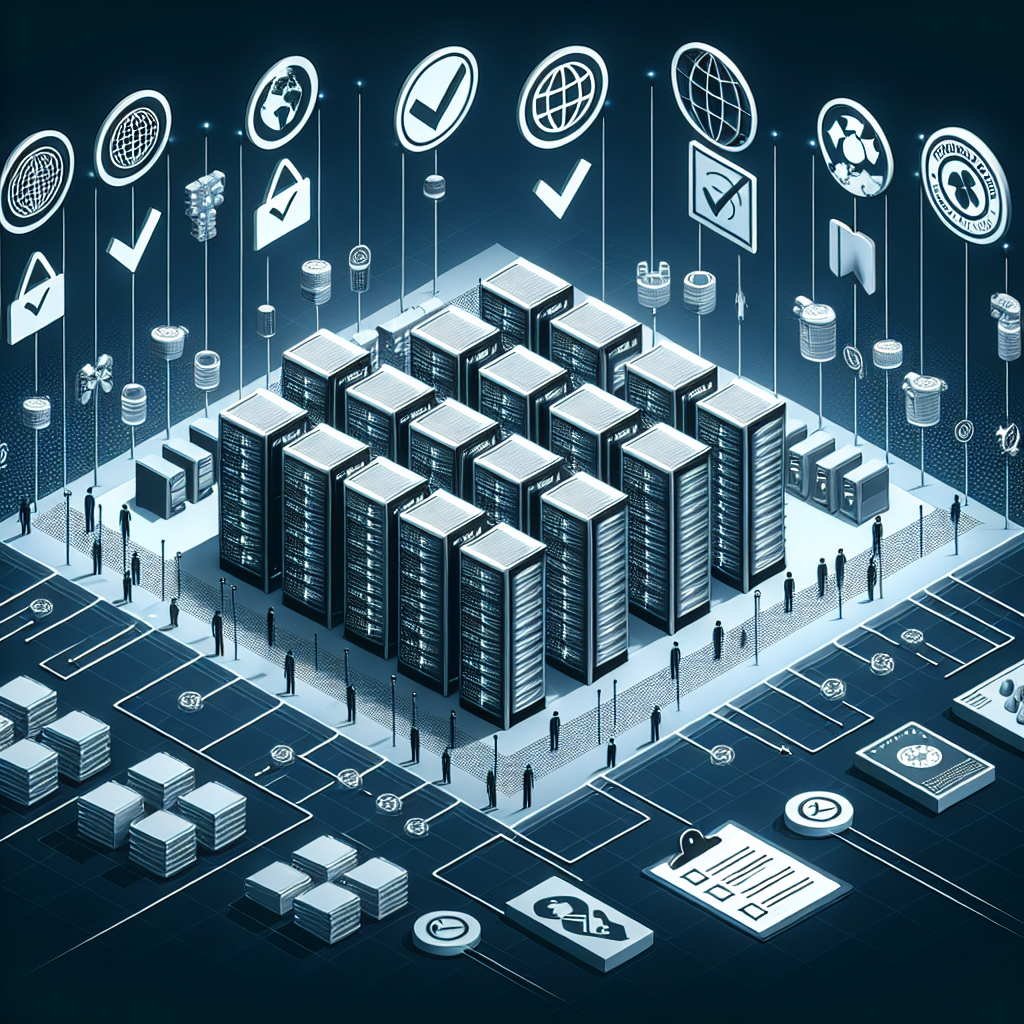
The Role of Data Center Audits in Meeting Regulatory Requirements and Industry Standards
In today’s digital age, data centers play a crucial role in storing and managing vast amounts of information for businesses and organizations. With the increasing importance of data security and privacy, it has become essential for data centers to comply with regulatory requirements and industry standards to ensure the protection of sensitive data.One of the key tools in achieving compliance is through regular data center audits. These audits are conducted by independent third-party organizations to assess the security, reliability, and efficiency of a data center’s operations. By conducting audits, data centers can identify potential vulnerabilities and gaps in their systems and processes, and take necessary steps to address them.
Data center audits play a crucial role in meeting regulatory requirements such as the General Data Protection Regulation (GDPR), the Health Insurance Portability and Accountability Act (HIPAA), and the Payment Card Industry Data Security Standard (PCI DSS). These regulations require organizations to implement strict security measures to protect sensitive data and ensure compliance with data protection laws.
Audits also help data centers adhere to industry standards such as the International Organization for Standardization (ISO) 27001, which sets out the requirements for establishing, implementing, maintaining, and continually improving an information security management system. Compliance with these standards demonstrates a data center’s commitment to maintaining high levels of security and reliability in their operations.
In addition to meeting regulatory requirements and industry standards, data center audits also help organizations improve their overall security posture. By identifying weaknesses and areas for improvement, data centers can implement best practices and security controls to enhance their security measures and protect against potential cyber threats.
Furthermore, data center audits provide assurance to customers and stakeholders that their data is being handled securely and in compliance with relevant regulations. This can help build trust and confidence in the data center’s services, leading to stronger relationships with clients and partners.
Overall, the role of data center audits in meeting regulatory requirements and industry standards cannot be overstated. By conducting regular audits, data centers can ensure the security and reliability of their operations, demonstrate compliance with regulations and standards, and enhance their overall security posture. In today’s data-driven world, data center audits are essential for organizations looking to protect their sensitive information and maintain the trust of their customers.
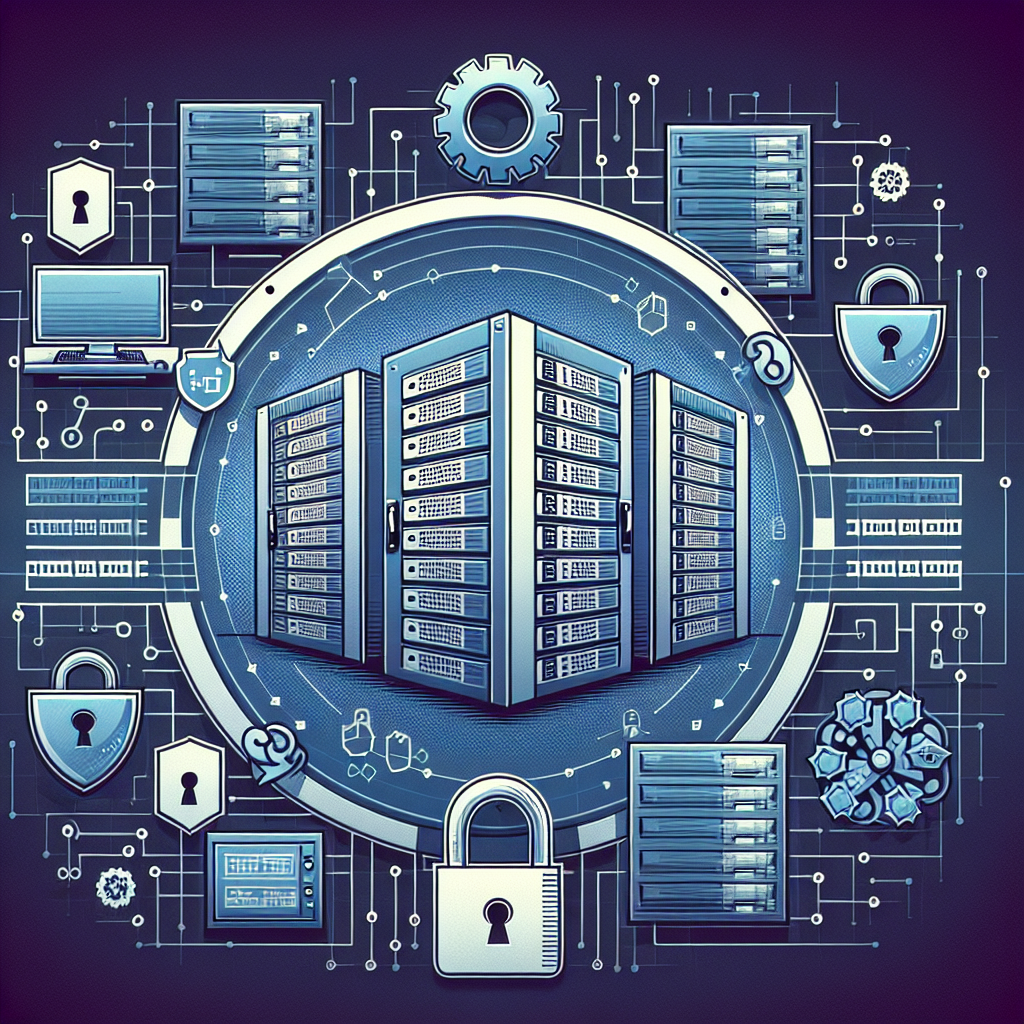
Understanding the Basics of Data Center Compliance
Data center compliance is a crucial aspect of data management and security in today’s digital age. With the increasing amount of data being generated and stored by businesses, it has become imperative to ensure that this data is handled in a secure and compliant manner. In this article, we will delve into the basics of data center compliance, why it is important, and how businesses can ensure they are meeting the necessary standards.What is Data Center Compliance?
Data center compliance refers to the adherence to regulations and standards set forth by governing bodies and industry organizations to ensure the security and privacy of data stored in data centers. These regulations are in place to protect sensitive information from unauthorized access, data breaches, and other security threats.
Why is Data Center Compliance Important?
Data center compliance is important for several reasons. First and foremost, it helps to protect sensitive data from falling into the wrong hands. Data breaches can have serious consequences for businesses, including financial losses, reputational damage, and legal repercussions. By complying with data center regulations, businesses can mitigate these risks and ensure the security of their data.
Additionally, data center compliance also helps to build trust with customers and partners. In today’s data-driven world, consumers are increasingly concerned about how their data is being handled. By demonstrating compliance with industry standards, businesses can show that they take data security and privacy seriously, which can help to attract and retain customers.
How to Ensure Data Center Compliance
Ensuring data center compliance involves a combination of technical safeguards, policies, and procedures. Here are some key steps businesses can take to ensure they are meeting the necessary standards:
1. Conduct a risk assessment: Before implementing any compliance measures, businesses should conduct a thorough risk assessment to identify potential vulnerabilities and areas of concern.
2. Implement security controls: Businesses should implement technical safeguards such as firewalls, encryption, access controls, and monitoring tools to protect data from unauthorized access.
3. Develop policies and procedures: Businesses should develop data security policies and procedures that outline how data should be handled, stored, and accessed within the data center.
4. Regularly audit and monitor compliance: Regular audits and monitoring of data center compliance are essential to ensure that security controls are working effectively and that any potential vulnerabilities are identified and addressed.
5. Stay informed: Data center compliance requirements are constantly evolving, so businesses should stay informed about the latest regulations and standards and update their compliance measures accordingly.
In conclusion, data center compliance is a critical aspect of data management and security in today’s digital landscape. By understanding the basics of data center compliance and taking proactive steps to ensure compliance, businesses can protect their data, build trust with customers, and mitigate the risks associated with data breaches.

The Green Revolution: How Data Centers Are Leading the Charge for Sustainability
The global push for sustainability and environmental consciousness has never been stronger, with individuals, businesses, and governments all looking for ways to reduce their carbon footprint and lessen their impact on the planet. One industry that has been at the forefront of this movement is the data center industry, which has been making significant strides in reducing its energy consumption and implementing green practices.Data centers are the backbone of the digital world, housing the servers and infrastructure that power the internet and store vast amounts of data. With the increasing demand for online services and the proliferation of cloud computing, data centers have seen exponential growth in recent years, leading to concerns about their environmental impact. Data centers are known for their high energy consumption, with servers running 24/7 and requiring massive amounts of electricity to keep them cool and operational.
In response to these concerns, many data center operators have been implementing sustainable practices to reduce their environmental impact and increase energy efficiency. This movement, known as the Green Revolution in the data center industry, is focused on reducing carbon emissions, using renewable energy sources, and implementing energy-efficient technologies.
One of the key strategies in the Green Revolution is the use of renewable energy sources such as solar, wind, and hydroelectric power. Many data centers are now powered by renewable energy, with some even producing more energy than they consume and feeding the excess back into the grid. By reducing their reliance on fossil fuels, data centers are not only reducing their carbon footprint but also helping to drive the transition towards a clean energy future.
In addition to using renewable energy, data centers are also implementing energy-efficient technologies to reduce their overall energy consumption. This includes using energy-efficient servers, cooling systems, and lighting, as well as implementing advanced cooling techniques such as free cooling and liquid cooling. By optimizing their energy usage, data centers are able to reduce their environmental impact while also saving on operational costs.
Furthermore, data centers are also focusing on sustainability in their design and construction practices. Many data centers are now being built with green building certifications in mind, using sustainable materials, energy-efficient designs, and water-saving technologies. By investing in green infrastructure, data center operators are able to reduce their environmental impact from the ground up.
Overall, the Green Revolution in the data center industry is a testament to the power of innovation and collaboration in driving sustainability forward. By implementing renewable energy sources, energy-efficient technologies, and sustainable design practices, data centers are leading the charge for sustainability and setting an example for other industries to follow. As the demand for online services continues to grow, it is essential that data centers continue to prioritize sustainability and work towards a greener future for all.
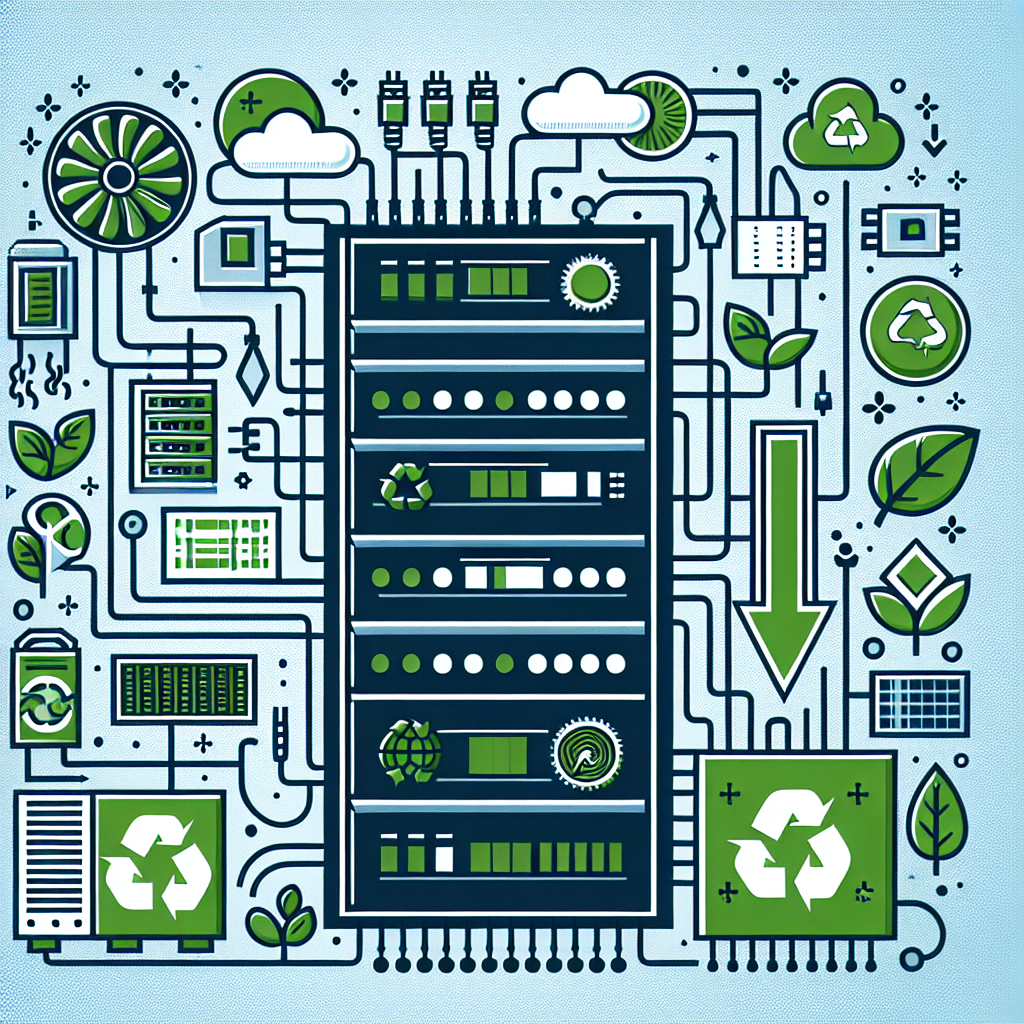
Cutting Costs and Carbon Footprints: The Benefits of Data Center Energy Efficiency
In today’s digital age, data centers play a crucial role in storing, processing, and managing vast amounts of information. However, the energy consumption of these facilities is a growing concern, as they can be significant contributors to carbon emissions. As businesses strive to become more sustainable and reduce their environmental impact, focusing on data center energy efficiency is an important step towards achieving these goals.One of the key benefits of improving data center energy efficiency is the cost savings that can be achieved. By reducing the amount of electricity needed to power and cool servers, businesses can lower their utility bills and improve their bottom line. In fact, a study by the U.S. Department of Energy found that implementing energy-efficient practices in data centers can result in savings of up to 20-30% on energy costs.
In addition to cost savings, improving data center energy efficiency can also help businesses reduce their carbon footprint. Data centers are known for their high energy consumption, and the electricity used to power these facilities is often generated from fossil fuels, which release greenhouse gases into the atmosphere. By implementing energy-efficient practices such as using energy-efficient servers, optimizing cooling systems, and implementing virtualization technologies, businesses can lower their energy consumption and reduce their carbon emissions.
Furthermore, improving data center energy efficiency can also enhance the reliability and performance of a company’s IT infrastructure. By reducing the amount of heat generated by servers, businesses can improve the overall efficiency and lifespan of their equipment. This can lead to fewer equipment failures, reduced downtime, and improved performance, ultimately benefiting the business’s operations and bottom line.
There are a variety of strategies that businesses can implement to improve data center energy efficiency. These include upgrading to energy-efficient servers and storage devices, optimizing cooling systems, implementing virtualization technologies, and using energy management software to monitor and control energy usage. By taking these steps, businesses can not only cut costs and reduce their carbon footprint but also improve the reliability and performance of their IT infrastructure.
In conclusion, improving data center energy efficiency is a win-win for businesses looking to cut costs and reduce their environmental impact. By implementing energy-efficient practices, businesses can lower their energy bills, reduce their carbon emissions, and improve the reliability and performance of their IT infrastructure. Investing in data center energy efficiency is not only a smart business decision but also a step towards creating a more sustainable future.
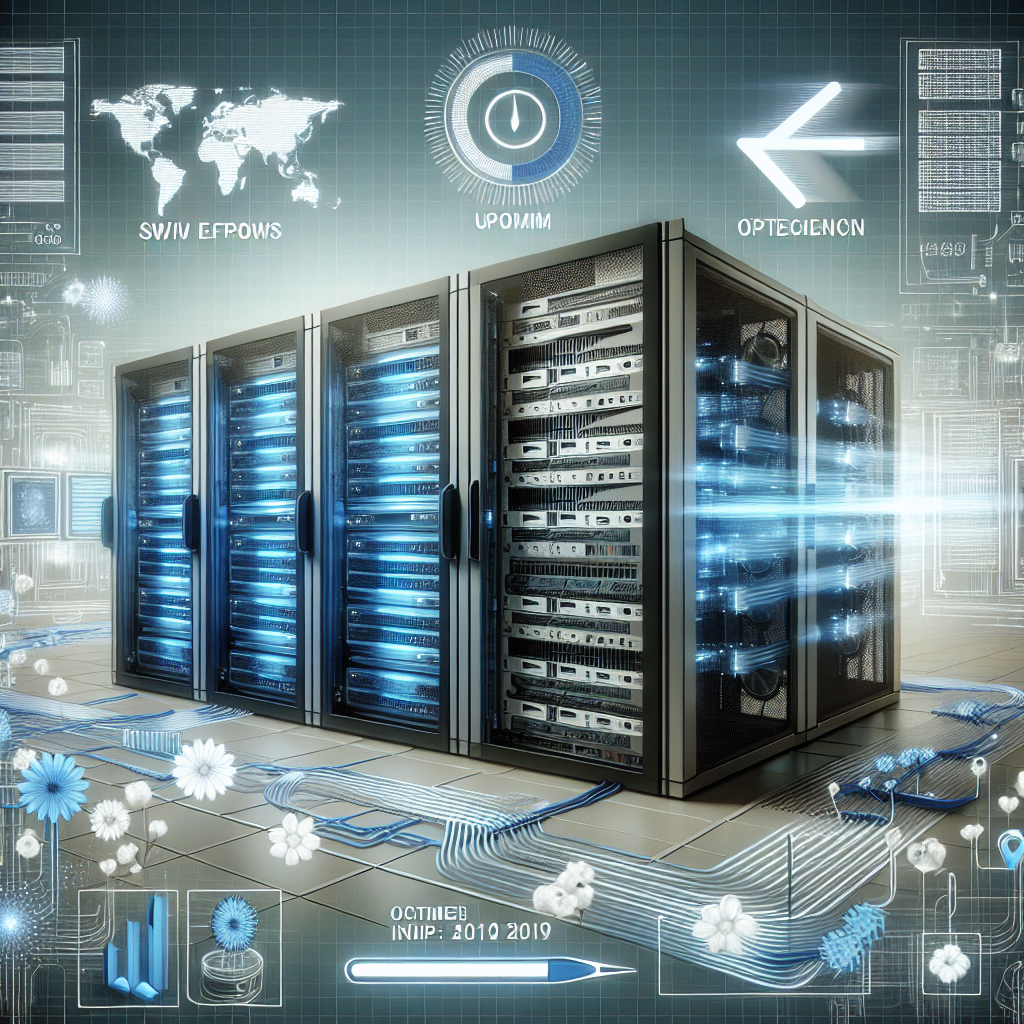
How to Achieve Peak Performance in Your Data Center
Data centers are the backbone of modern businesses, providing the infrastructure necessary to store and process massive amounts of data. However, as data demands continue to grow, it is essential for data center operators to ensure peak performance to meet the needs of their organization. Here are some tips on how to achieve peak performance in your data center:1. Regular Maintenance and Monitoring: Regular maintenance of your data center equipment is crucial to ensuring optimal performance. This includes checking for any hardware issues, updating software, and monitoring performance metrics. By regularly monitoring your data center, you can identify potential issues before they become major problems.
2. Utilize Virtualization Technology: Virtualization technology allows you to maximize the use of your hardware resources by creating virtual machines. This can help reduce the number of physical servers needed in your data center, leading to cost savings and improved performance.
3. Optimize Cooling and Power Management: Cooling and power management are critical components of data center performance. By optimizing your cooling systems and power management strategies, you can ensure that your equipment operates at peak efficiency. This includes using energy-efficient cooling systems, implementing hot and cold aisle containment, and utilizing power management tools to reduce energy consumption.
4. Implement Redundancy and Disaster Recovery Plans: Redundancy and disaster recovery plans are essential for ensuring data center uptime and availability. By implementing redundant systems and backup solutions, you can minimize the risk of downtime and data loss in the event of a hardware failure or natural disaster.
5. Implement Automation and Orchestration: Automation and orchestration tools can help streamline data center operations and improve efficiency. By automating routine tasks and workflows, you can free up valuable resources and ensure consistent performance across your data center environment.
6. Conduct Regular Performance Testing: Regular performance testing is essential for identifying bottlenecks and optimizing data center performance. By conducting load testing, stress testing, and performance monitoring, you can identify areas for improvement and make necessary adjustments to enhance performance.
7. Invest in Training and Development: Investing in training and development for your data center staff is crucial for ensuring peak performance. By providing ongoing education and certification opportunities, you can empower your team to stay current with the latest technologies and best practices in data center management.
In conclusion, achieving peak performance in your data center requires a combination of proactive maintenance, strategic planning, and investment in technology and training. By following these tips, you can ensure that your data center operates at its best, meeting the demands of your organization and supporting business growth.

The Role of Data Center Capacity Planning in Business Continuity and Disaster Recovery
In today’s digital age, data centers play a crucial role in ensuring the smooth operation of businesses. With the increasing reliance on technology and data, it is more important than ever for organizations to have a solid data center capacity planning strategy in place. This is particularly important when it comes to business continuity and disaster recovery.Data center capacity planning involves assessing the current and future needs of a data center in order to ensure that it can meet the demands of the business. This includes evaluating factors such as storage capacity, processing power, and network bandwidth. By accurately forecasting these requirements, organizations can avoid costly downtime and ensure that their data center can handle any unexpected spikes in demand.
When it comes to business continuity and disaster recovery, data center capacity planning is essential. In the event of a disaster or outage, having a well-prepared data center can mean the difference between quickly recovering and suffering significant financial losses. By ensuring that the data center has sufficient capacity to handle the workload during a crisis, organizations can minimize the impact of any disruptions and keep their operations running smoothly.
One of the key aspects of data center capacity planning for business continuity and disaster recovery is redundancy. This involves having backup systems and resources in place to ensure that the data center can continue to operate even in the event of a failure. This may include redundant power supplies, backup generators, and duplicate servers. By having these redundant systems in place, organizations can ensure that their data center remains operational even in the face of a disaster.
Another important aspect of data center capacity planning for business continuity and disaster recovery is scalability. As businesses grow and their data needs increase, it is important for the data center to be able to scale up to meet these demands. This may involve adding additional servers, storage capacity, or network bandwidth as needed. By planning for scalability in advance, organizations can ensure that their data center can continue to support their operations as they grow.
Overall, data center capacity planning plays a crucial role in ensuring business continuity and disaster recovery. By accurately forecasting the needs of the data center, implementing redundant systems, and planning for scalability, organizations can minimize the impact of any disruptions and ensure that their operations remain resilient in the face of adversity. Investing in data center capacity planning is essential for any organization that relies on technology and data to drive their business forward.
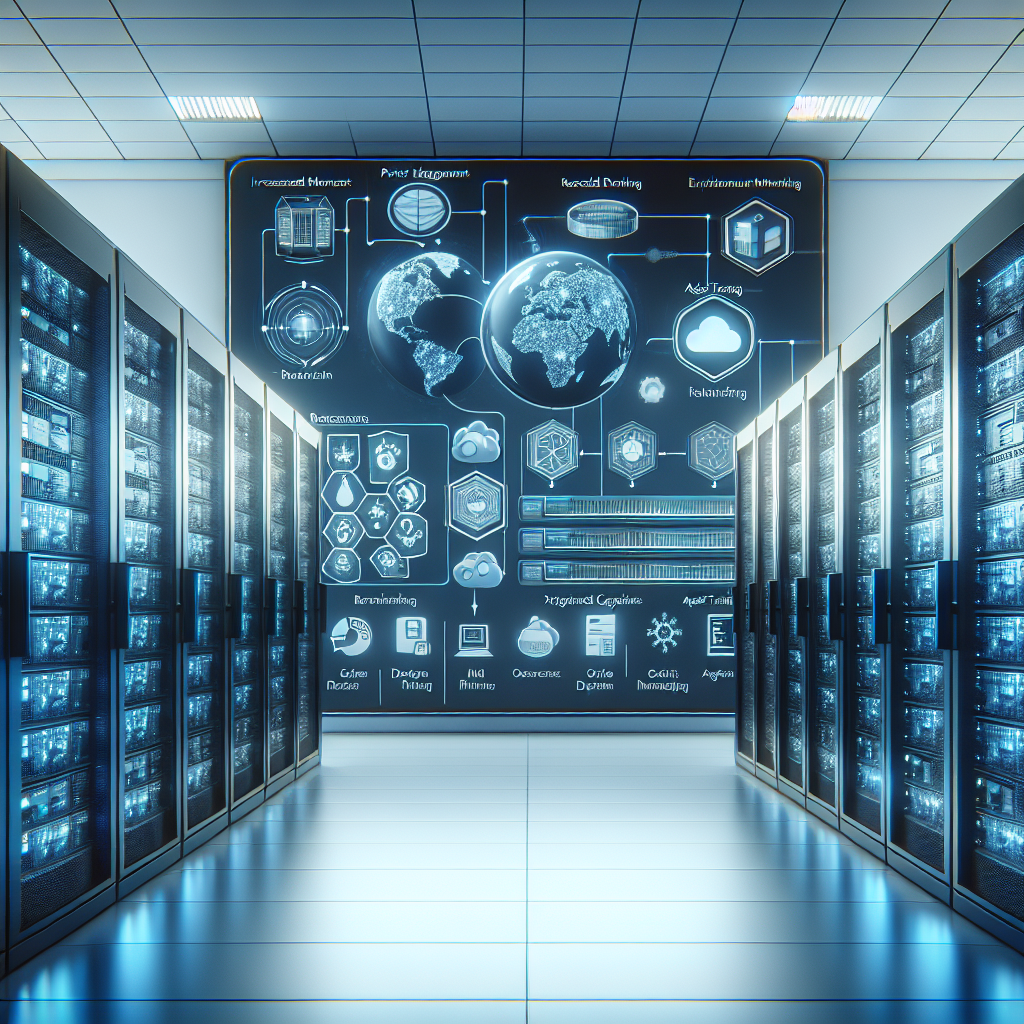
Key Features and Benefits of Implementing DCIM in Your Data Center
Data center infrastructure management (DCIM) is becoming increasingly important in today’s technology-driven world. As data centers continue to grow in size and complexity, the need for efficient and effective management tools has never been greater. Implementing a DCIM solution can provide a wide range of benefits for data center operators, including improved efficiency, cost savings, and better overall performance. In this article, we will explore some of the key features and benefits of implementing DCIM in your data center.Key Features of DCIM:
1. Real-time monitoring and management: One of the primary features of DCIM is its ability to provide real-time monitoring of all aspects of the data center infrastructure. This includes power usage, cooling systems, server performance, and more. With this information at their fingertips, data center operators can quickly identify and address potential issues before they become major problems.
2. Capacity planning: DCIM solutions also offer robust capacity planning tools that allow operators to optimize the use of resources within the data center. By analyzing current usage patterns and predicting future needs, data center managers can ensure that resources are allocated efficiently and effectively.
3. Energy efficiency: DCIM solutions can help data centers reduce their energy consumption and lower their carbon footprint. By monitoring power usage and identifying inefficiencies, operators can make informed decisions about where to make improvements and save money on energy costs.
4. Asset management: DCIM solutions provide comprehensive asset management capabilities, allowing operators to track and manage all hardware and software assets within the data center. This can help prevent loss or theft of equipment, as well as ensure that all assets are being used efficiently.
Benefits of Implementing DCIM:
1. Improved efficiency: By providing real-time monitoring and management capabilities, DCIM solutions can help data center operators identify and address inefficiencies in their infrastructure. This can lead to improved overall efficiency and performance, as well as cost savings.
2. Cost savings: DCIM solutions can help data centers reduce their energy consumption, optimize resource usage, and prevent costly downtime. By improving efficiency and reducing waste, operators can save money on energy costs and extend the life of their equipment.
3. Increased reliability: With real-time monitoring and management capabilities, data center operators can quickly detect and address potential issues before they impact performance. This can help prevent costly downtime and ensure that the data center remains operational at all times.
4. Scalability: DCIM solutions are highly scalable and can grow with your data center as it expands. Whether you are adding new servers, upgrading equipment, or moving to a larger facility, a DCIM solution can adapt to your changing needs and provide the visibility and control you need to manage your infrastructure effectively.
In conclusion, implementing a DCIM solution in your data center can provide a wide range of benefits, including improved efficiency, cost savings, and better overall performance. By leveraging the key features of DCIM, such as real-time monitoring, capacity planning, energy efficiency, and asset management, data center operators can optimize their infrastructure and ensure that it meets the needs of their business now and in the future. If you are looking to improve the management of your data center, consider implementing a DCIM solution today.
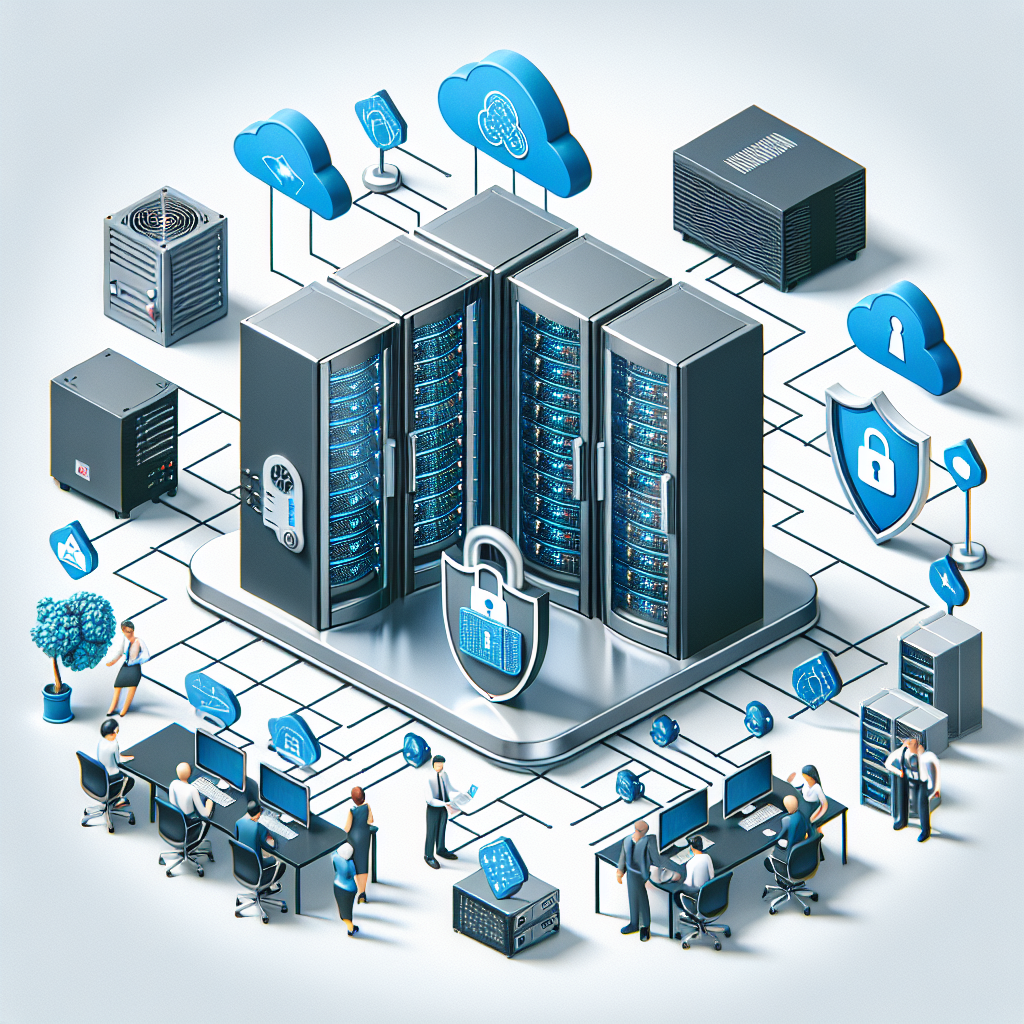
Key Strategies for Maintaining Data Center Business Continuity
A data center is the backbone of any organization’s IT infrastructure, housing critical hardware, software, and data that keeps the business running smoothly. In today’s fast-paced digital world, ensuring business continuity in a data center is essential to prevent costly downtime and maintain the trust of customers and stakeholders. Here are some key strategies for maintaining data center business continuity:1. Implement a comprehensive disaster recovery plan: A disaster recovery plan outlines the steps to take in the event of a data center outage or disaster, including how to restore critical systems and data. This plan should be regularly updated and tested to ensure it is effective in a real-world scenario.
2. Invest in redundant systems and backups: Redundancy is key to ensuring data center business continuity. This includes redundant power supplies, network connections, and storage systems to minimize the risk of hardware failures. Regular backups of critical data should also be taken and stored off-site to protect against data loss.
3. Monitor and maintain infrastructure: Regular monitoring of hardware and software systems in the data center can help identify potential issues before they escalate into major problems. Proactive maintenance of equipment, such as regular firmware updates and cleaning, can also help prevent unexpected failures.
4. Train and educate staff: A well-trained and knowledgeable team is crucial for maintaining data center business continuity. Staff should be familiar with the disaster recovery plan, know how to respond to emergencies, and have the skills to troubleshoot and resolve issues quickly.
5. Conduct regular audits and assessments: Regular audits and assessments of the data center infrastructure can help identify vulnerabilities and areas for improvement. This can include physical security assessments, vulnerability scans, and performance testing to ensure the data center is operating at peak efficiency.
6. Plan for scalability and growth: As the organization grows, so too will the demands on the data center. Planning for scalability and growth is essential to ensure that the data center can accommodate increased workloads and traffic without sacrificing performance or reliability.
7. Maintain strict security measures: Data center security is paramount for maintaining business continuity. This includes physical security measures such as access control and surveillance, as well as cybersecurity measures like firewalls, encryption, and intrusion detection systems to protect against cyber threats.
By implementing these key strategies for maintaining data center business continuity, organizations can ensure that their critical systems and data are protected, and that they can continue to operate smoothly even in the face of unexpected challenges. Investing in the right infrastructure, training, and planning can help mitigate risks and keep the data center running smoothly for years to come.
